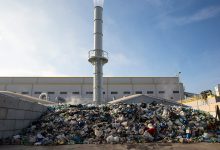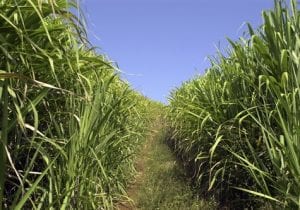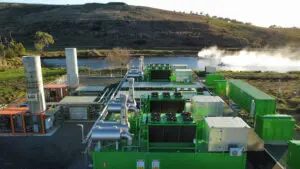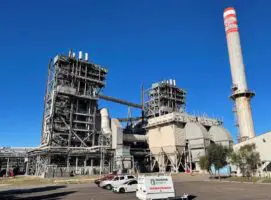Cleanaway Waste Management has revealed plans to develop a massive waste-to-energy plant in Western Sydney, a move the company insists will help put Sydney’s rubbish to good use, but is likely to reignite the debate over the merits of burning rubbish to produce electricity.
The company anticipates the $500 million project will be able to utilise up to 500,000 tonnes of household and business waste that is unable to be recycled, and will convert the waste into enough electricity to power up to 65,000 homes.
The project is a joint venture between Cleanaway and Macquarie Capital’s Green Investment Group and expects to be able to divert up to a third of Western Sydney’s waste that would otherwise end up in a landfill.
“Energy from waste – as a supplement to waste avoidance, reuse and recycling – deals with our waste in a more sustainable way. With the technology that is available today, there is an opportunity for Western Sydney to become a leader in smart waste management.” Cleanaway CEO Vik Bansal said.
The announcement includes little about the technologies that will be used at the waste-to-energy project, but a spokesperson confirmed that the project would use “thermal combustion” to convert the waste to heat for electricity generation. The company has earmarked a site within an industrial zone on Wallgrove Road in the suburb of Eastern Creek.
Sydney has long had troubles managing the amount of landfill bound waste that the city produces and has been seeking out alternatives for the disposal of waste, including sending waste to other regions. Naturally, regional areas have pushed back on proposals for their towns to become hosts to Sydney’s rubbish.
Thermal combustion, or incineration, technologies are a common solution used overseas, and are in wide use in Europe and Japan, and used as a means to both minimise the amount of solid waste sent to landfill and provide an additional source of electricity.
However, the technology has struggled to find momentum in Australia.
Waste incineration projects have encountered opposition from community and environmental groups, with particular concerns about the potential pollution produced by such facilities and arguing that waste management should focus on minimising waste production rather than accepting waste for energy production.
A previous proposal for a waste-to-energy combustion plant for western Sydney was shelved after the NSW Environmental Protection Authority and the NSW Department of Planning recommended the project should not go ahead.
This was a point made by NSW Greens spokesperson on waste, Cate Faehrmann, in reaction today’s announcement from Cleanaway.
“This has already been rejected by the community once. Waste incineration should not be given the go ahead unless irrefutable evidence can be provided that it will significantly reduce greenhouse gas emissions while not emitting toxic pollutants,” Faehrmann said.
“A proposal to build a waste incinerator in western Sydney has already been rejected by the Independent Planning Assessment Commission, NSW Health and the EPA on the grounds that it poses too much of a risk to the community. Even the Western Sydney Local Health District has said that to build and incinerator within city limits is “not consistent with over 100 years of environmental regulation to improve urban air quality”.
The NSW Department of Planning received almost 1,000 submissions on the previously proposed incineration project, with almost all submissions objecting to the project. The department also received two petitions with more than 10,000 signatures opposing the project.
The earlier Eastern Creek waste to energy proposal was ultimately refused planning approval by the NSW Independent Planning Commission, which found the expected impacts on air quality, risks to human health and increased pollution outweighed the benefits of the project.
A similar project proposed for the Canberra suburb of Fyshwick met a similar fate last year. A project proposed by a consortium that included Capital Recycling and ActewAGL, which was being managed by former Wallabies player and coach Ewen McKenzie, was withdrawn after it became clear that it would not win the support of the ACT Government.
Another project that received backing from Macquarie Capital, a $700 million waste incineration project in Western Australia, the $700 million Kwinana Waste to Energy Project, has been one of the few success stories.
The Kwinana project also received the backing of the Australian Renewable Energy Agency, which chipped in $23 million in grant funding and is under development in an industrial precinct south of Perth.
A life-cycle assessment of the Kwinana project found that the project would lead to an overall reduction in greenhouse gas emissions, as the project was able to divert waste from landfill, that would otherwise produce methane gas with a global warming potential significantly higher than carbon dioxide. Its distance from residential areas has helped the project win gain approval from planning authorities.
Cleanaway is currently preparing the environmental impact statement for its Western Sydney project, which it expects to release for public consultation early next year.
“The proposal will be assessed considering the triple bottom line – making sure it creates social, environmental and economic benefits. We won’t spare any effort to ensure the design is leading edge in terms of environmental controls and safe for the community,” Bansal said.
“Critically, we want to bring the community with us. Cleanaway works with communities across Australia and that is a commitment we take very seriously.”
A spokesperson for Cleanaway later told RenewEconomy:
“This proposal is dependent on successfully undergoing a rigorous approvals process, and we are committed to working with the relevant authorities to satisfy environmental and planning requirements.
“The proposal will implement technology which is safely and cleanly used in more than 490 energy from waste centres throughout Europe, many of which are in cities and residential areas. As so many of these centres process only residual waste from households and businesses – the type of waste that would be processed in our proposed centre – we have significant benchmarks that we can draw on as we continue to develop our proposal.”










